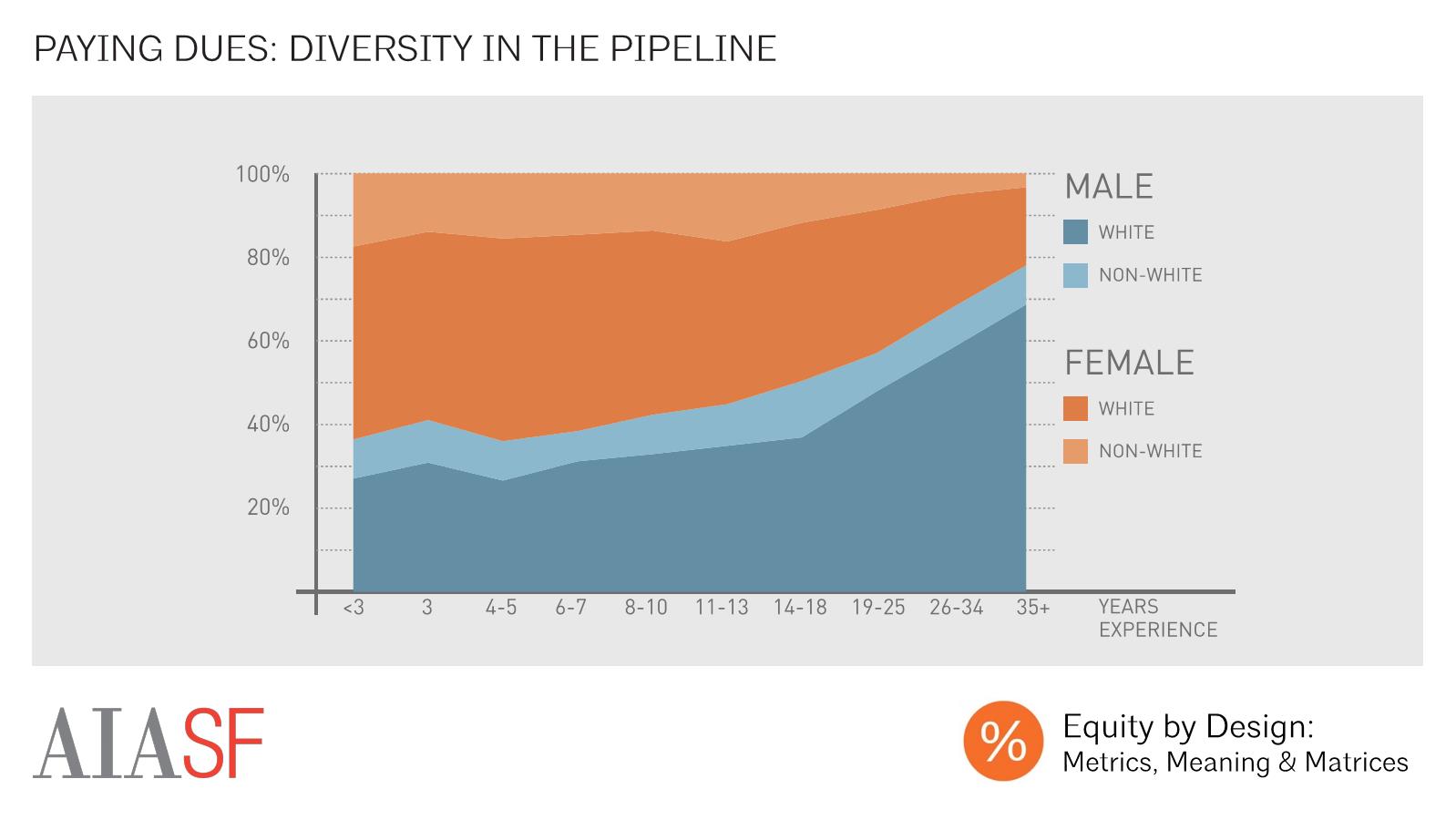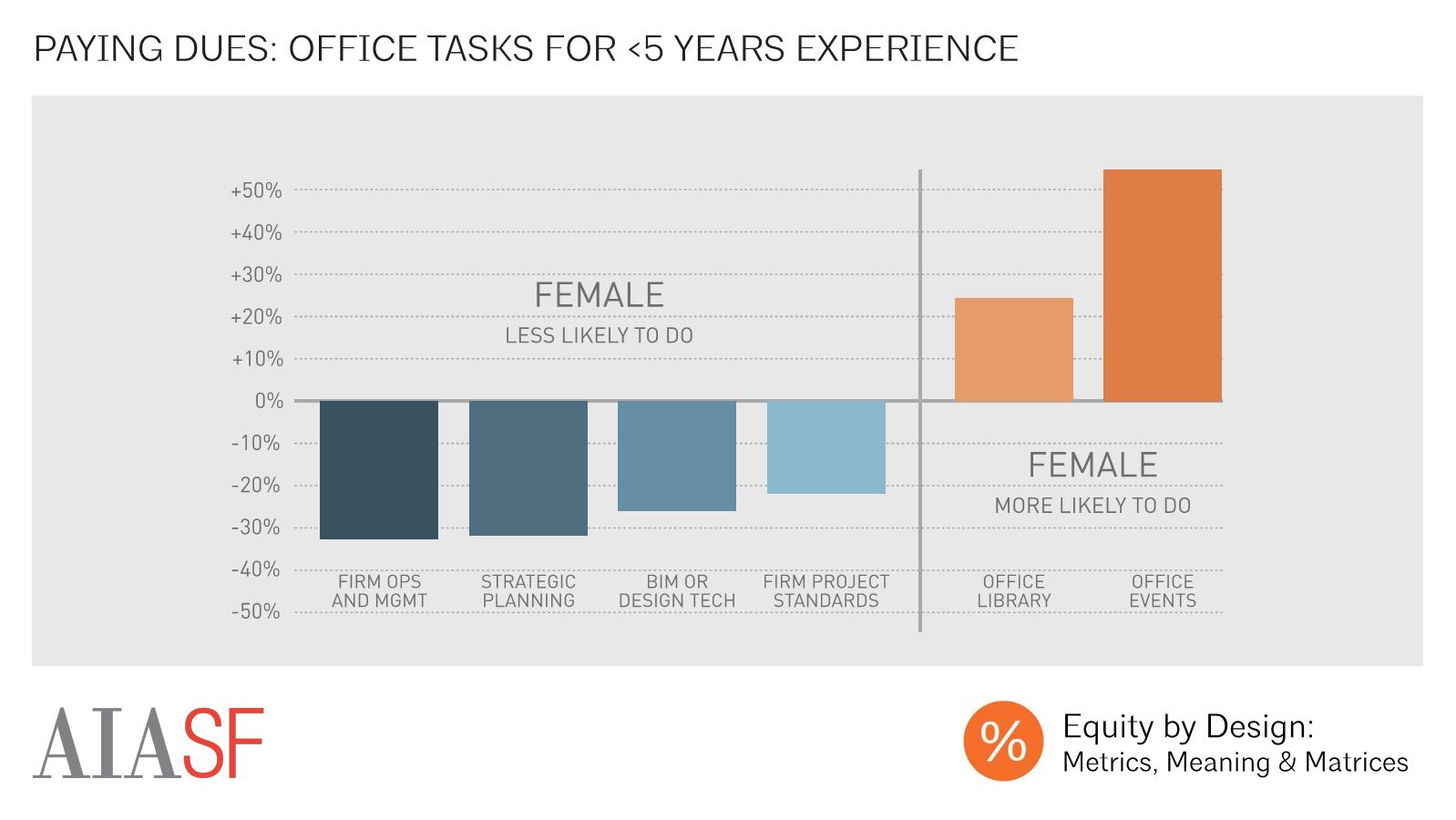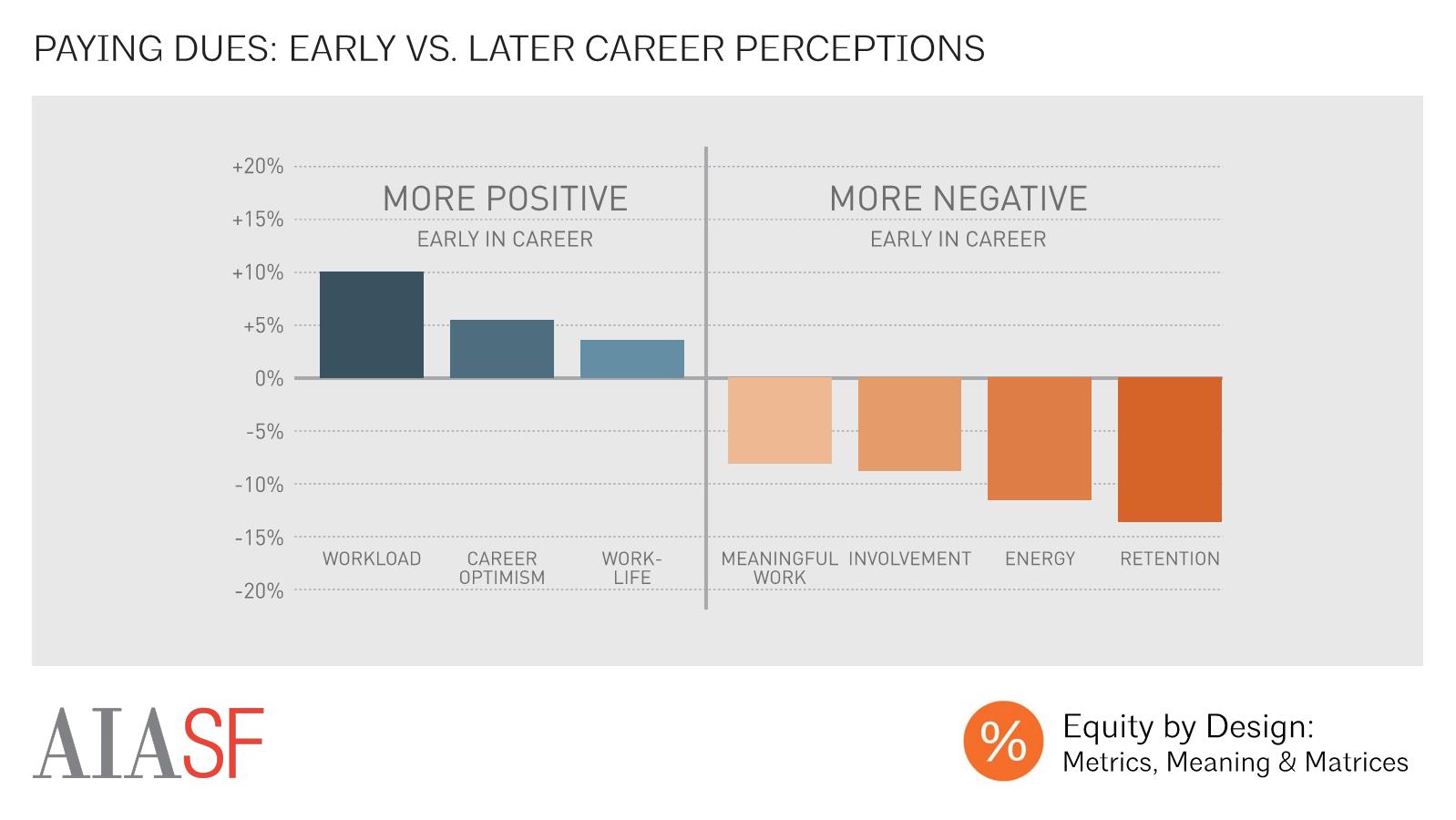Infographic Slides 2017

Diversity in the Pipeline
Within our sample, we saw a the greatest level of diversity amongst those with less than five years of experience, with decreasing racial, ethnic, and gender diversity in the field at each subsequent experience level. This phenomenon is explained, in part, because today’s graduating architecture classes are more diverse than they were previously, but it’s also possible that women and people of color are more likely to exit the field than white men are. In order to create and maintain a talent pipeline that reflects the diversity of our communities, employers and individuals alike should consider addressing several key challenges often faced by practitioners within the first five years of their careers in architecture.

Office Tasks for <5 Years Experience
Even within the first several years of one’s career, there were clear gendered divisions in the office management tasks that respondents took on, with female respondents with less than 5 years experience more likely than their male counterparts to take on planning office events and managing the office library and less likely to take on more strategic tasks like firm project standards, strategic planning, or firm operations and management.

Early vs. Later Career Perceptions
While we were interested in the ways that roles and responsibilities were allocated within the population of early career professionals, we were also interested in the ways in which their experiences compared with those who had more experience. We found that, on the one hand, those early in their careers had more positive perceptions of workload and work life and were more optimistic about their futures. However, those early in their careers also tended to be less likely to find their work meaningful and rewarding, feel less involved in, or energized by, their work, and finally, much less likely to plan to stay at their current job for the next year.

Burnout Likelihood - Early vs. Later Career
There were especially marked differences in the likelihood of burnout, with roughly one in three female respondents with five or less years of experience reporting signs of burnout. This is roughly twice the rate of burnout exhibited by more senior male respondents.

Top Correlations: Early Career Retention Likelihood
Given this group’s heightened likelihood of attrition, we were interested to see that certain firm-led behaviors, like firm leaders providing one-on-one coaching and feedback and including personal and professional growth as a criteria for performance evaluation, we associated with a higher likelihood of planning to stay at one’s job during the first 5 years of an architectural career.





